Laboratory
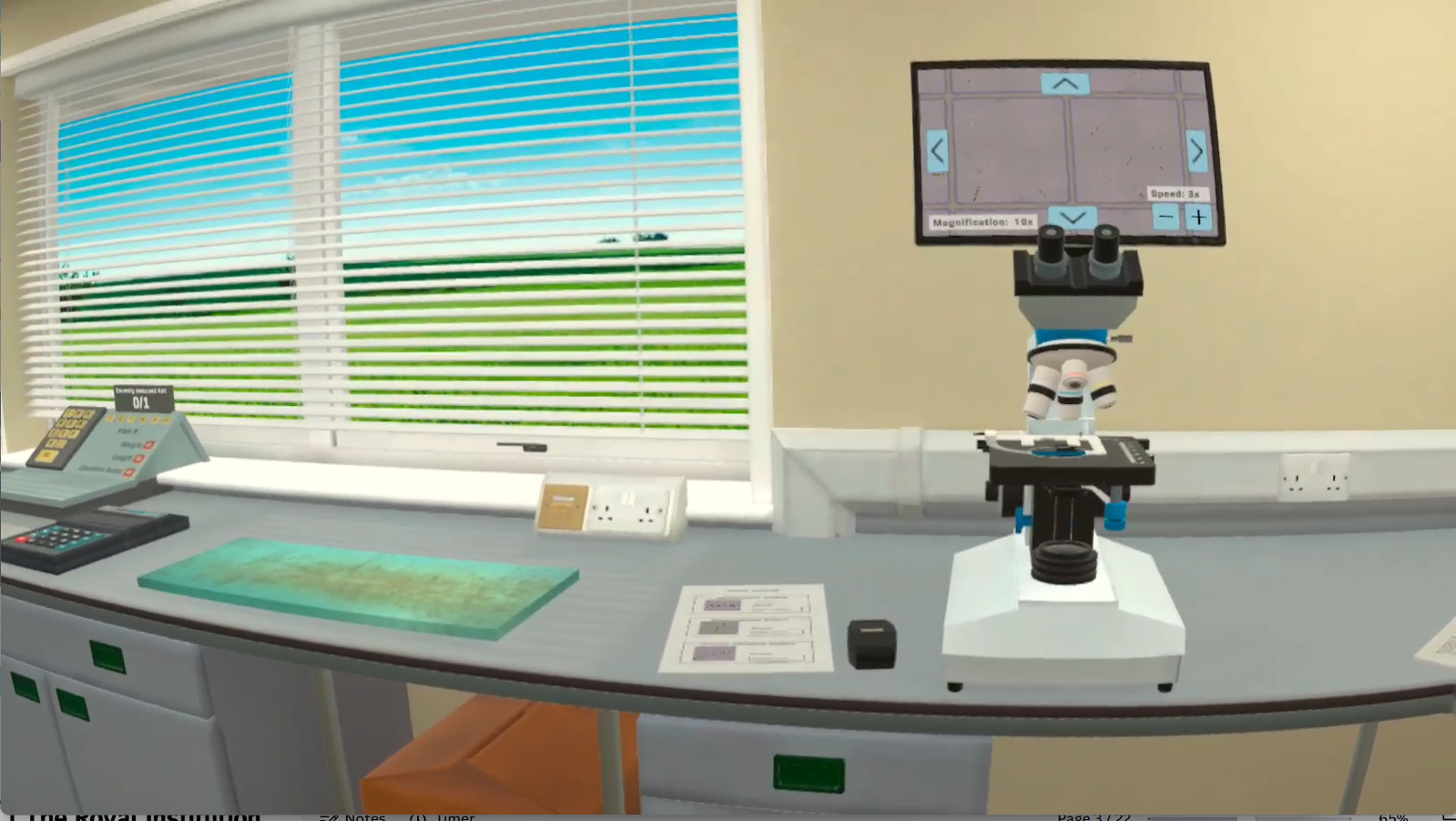

A laboratory environment is important for ensuring proper monitoring of water quality and fish health in salmon aquaculture.
In this scenario you will:
- Carry out water sample analysis to determine plankton levels and identify different species.
- Calculate the condition factor by carrying out routine measurement tasks.
- Learn about salmon anatomy (coming soon).
Introduction to plankton
Introduction to plankton
The word “plankton” comes from the Greek for “drifter” or “wanderer.” Plankton are usually microscopic organisms which cannot swim, they are carried by tides and currents. Some plankton drift this way for their entire life cycle whilst larval stages of larger species grow big enough to swim against currents. They are found both in marine and freshwater environments. Plankton are classified into phytoplankton (plants) and zooplankton (animals).
Why do fish farmers have to worry about plankton?
Why do fish farmers have to worry about plankton?
Phytoplankton when found in high numbers can become harmful to fish and cause physical damage to gills. Toxins released by certain plankton can directly affect the fish causing high moralities. The death of phytoplankton in high numbers and their bacterial decomposition can lead to oxygen depletion also increasing fish mortality.
Plankton identification
Plankton identification
Pseudo-nitschia
Long needle-like structure and domoic acid toxic production in some species can cause gill damage.
Chaetocerous
Has spines with serrated edges which can lodge in fish gill tissues and cause irritation, over production of mucous, and death.
Skeletonema Diatom
Not the right shape for harming fish gills but when found in dense blooms can become harmful.
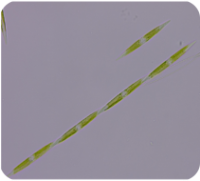
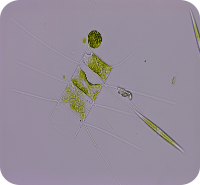
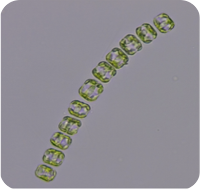
Plankton and feeding
Plankton and feeding
Excessive plankton blooms may also decrease oxygen levels during the night time meaning that the salmon don’t have enough oxygen available to feed. A plankton bloom which reduces the depth of underwater visibility to less than 20-30cm is also likely to cause low oxygen concentrations in the night time.
Plankton counting
Plankton counting
Monitoring water quality is of great importance to the management of an aquaculture facility. A variety of variables are measured such as plankton and algae levels, temperature, salinity, dissolved oxygen, alkalinity and nitrite levels. A good laboratory setup is critical for conducting these tests.
A counting chamber observed via a microscope is a commonly used tool for water sample analysis. It allows for algae and plankton suspended in water to be counted and identified. Some types of these organisms are toxic to salmon and can cause fatal gill damage, it is therefore important that these organisms are classified and their levels are known.
The chamber holds a known volume of liquid which is intended to be representative of the sample.
Using the grid of the chamber, the number of algae and plankton can be counted and the population estimated.
For example, if you have 1 ml of water split across a 1000 square grid, each square will contain 1µL of water. For organisms lying on the boundary of a square, only those on 2 of the 4 sides will be counted. In the example above this is the top and left side.
If you observe an average of 4.5 organisms of a particular species per square over 4 squares randomly chosen across the sample you can estimate that 1 ml of water will contain 5000 organisms or 5 million in a litre of sea water.
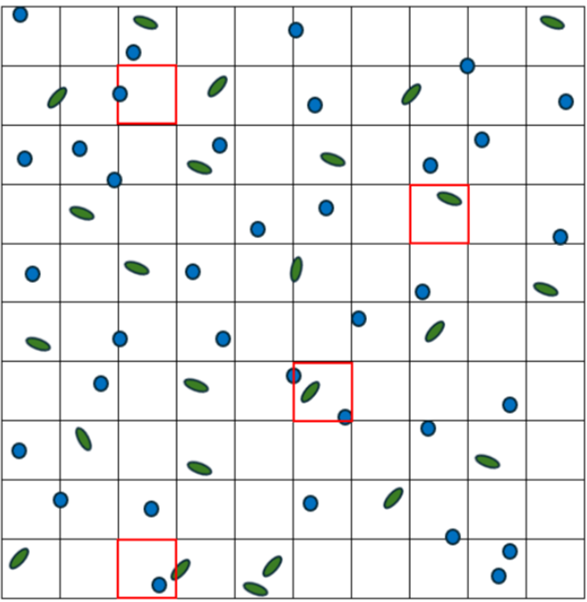
Calculate the number of plankton (green) and algae (blue) organisms present in 1 litre of water based upon the squares marked in red. Consider that this is a 1ml sample with each square therefore representing 10µL.
A 75,000 plankton per litre, 100,000 algae per litre
B 5,000 plankton per litre, 7,500 algae per litre
C 50,000 plankton per litre, 75,000 algae per litre
D 7,500 plankton per litre, 10,000 algae per litre
Do you think the answer is an accurate representation of the sample? What could be done to improve accuracy?
Condition factor
Condition factor
- Weighing and measuring of salmon is important for monitoring the growth and development of the fish.
- The condition factor is a measure of the health and well-being of the fish and gives an idea of whether it is underweight, overweight or of optimal weight for its health.
- The condition factor of the salmon can be calculated by dividing the fish weight by the fish length cubed, then multiplying the result by 100.
- Healthy fish typically have a condition factor of around 1.
Please calculate the condition factors of the following fish:
A) 47 cm, 1200g
B) 26 cm, 150g
C) 33 cm, 700g
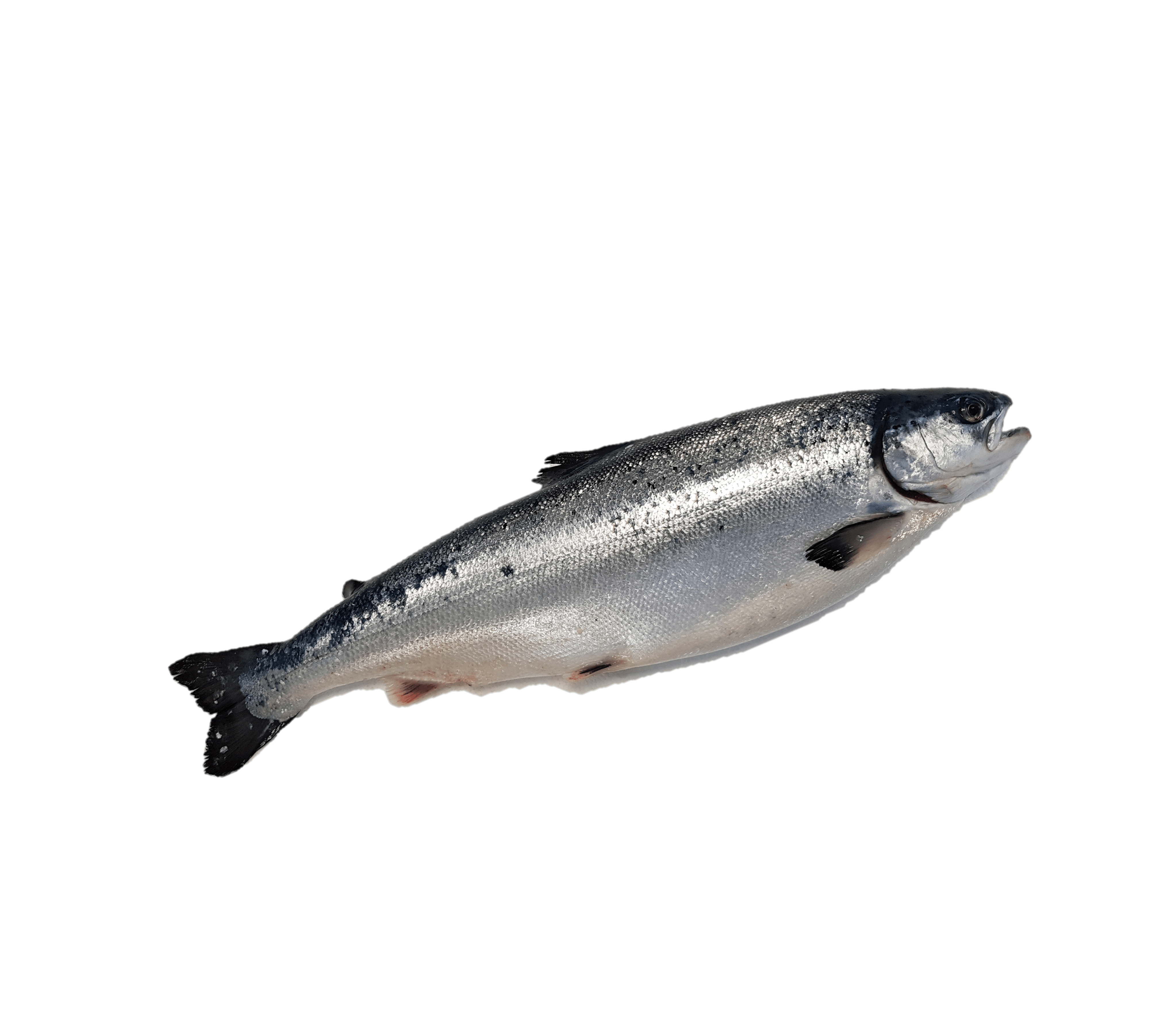
Salmon external anatomy
Salmon external anatomy
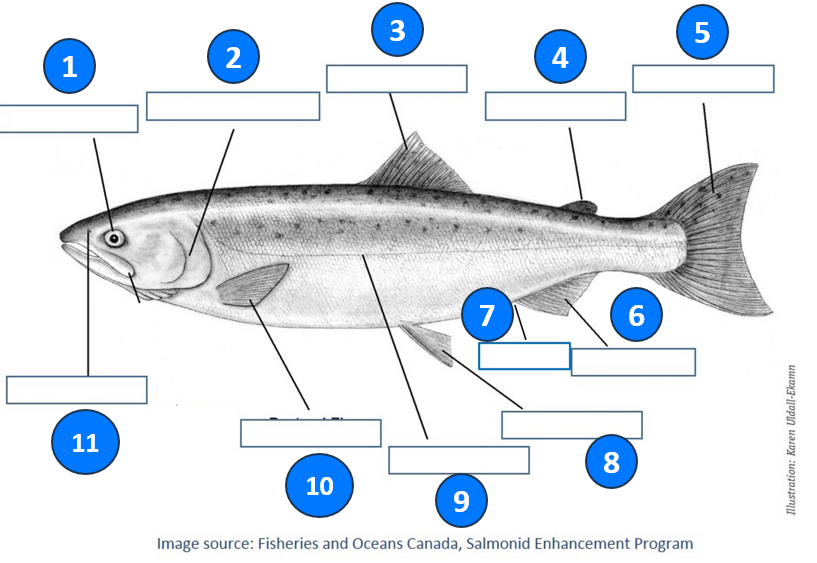
| Body Part | Description |
|---|---|
| Lateral line | Specialised cells which detect low frequency sound waves to sense water current and other fish |
| Dorsal fin | An upper fin, helps fish turn quickly and stop and prevents rolling |
| Adipose fin | An upper soft and fleshy fin, acts as a flow sensor |
| Caudal fin | Tail fin, like a motor, creates forward motion and acts as a rudder |
| Anal fin | A lower fin, used for stability and controls rolling |
| Pelvic fin | A lower fin, helps stabilise and slow the fish down, used to move up and down |
| Pectoral fin | A lower fin, creates lifts, helps to turn fish left or right |
| Gill cover | A hard protective plate to cover the gills |
| Maxillary bone | The upper jaw |
| Nostrils | Helps the fish to navigate back to the streams they were born in |
| Eyes | Used for sight and to navigate their aquatic environment, some can see 5 metres or more |